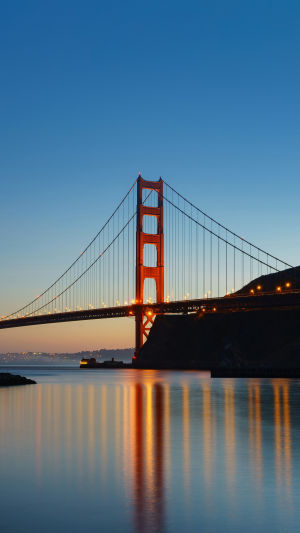The Golden Gate Bridge, an emblem of engineering brilliance and aesthetic grandeur, stands proudly as a gateway to San Francisco, California. Recognized globally for its striking "International Orange" color and majestic structure.
The bridge offers visitors a glimpse into both historical ingenuity and breathtaking natural vistas. This guide aims to equip all Lykkers with key insights and tips for a memorable visit to this iconic landmark.
<h3>Introduction to the Golden Gate Bridge</h3>
Spanning the one-mile-wide (1.6 km) strait that connects San Francisco Bay to the Pacific Ocean, the Golden Gate Bridge was completed in 1937. Once the longest suspension bridge in the world, it remains one of the most photographed bridges globally, thanks to its stunning design and backdrop.
<h3>Planning Your Visit</h3>
<b>No Entry Fee</b>: Access to the Golden Gate Bridge is free of charge, which makes it a must-visit for travelers on any budget. The bridge is open to both pedestrians and cyclists, offering different experiences depending on the mode of transportation chosen.
<b>Optimal Visiting Times</b>: The bridge can be accessed by pedestrians from 5:00 AM to 6:30 PM during winter months and until 9:00 PM in the summer. Cyclists can enjoy 24-hour access. Visiting during sunrise or sunset provides spectacular photo opportunities as the sun illuminates the bridge and the surrounding waters.
<b>How to Get There</b>: The Golden Gate Bridge is well-connected by various transportation options.
Those driving can find limited parking available at both the north and south ends of the bridge.
Public transit users will find frequent bus services, including routes that stop directly at the bridge's visitor areas.
For an invigorating experience, renting a bike and cycling across the bridge provides not only exercise but also unparalleled views of the city and bay.
<h3>Transportation Tips</h3>
Parking can be challenging, especially on weekends or during peak tourist seasons. It is advisable to arrive early or use alternative transportation methods like public buses or bikes. Information on bike rentals and bus schedules can be easily found online and provides a stress-free way to enjoy your visit.
<h3>Historical Context</h3>
The construction of the Golden Gate Bridge was an audacious project during the Great Depression, symbolizing hope and resilience.
Its completion was a feat of modern engineering, utilizing revolutionary cable-suspension techniques which have inspired countless other structures worldwide.
The choice of its vibrant color was intended to enhance the bridge’s visibility through the thick fog that frequently blankets the area.
<h3>Nearby Attractions for a Full Day Experience</h3>
To make the most of your trip to the Golden Gate Bridge, consider exploring nearby attractions:
<b>Battery Spencer</b>: This historic places offers arguably the best view of the bridge. Located on the Marin side of the bridge, it provides panoramic vistas that are perfect for photography enthusiasts.
<b>Crissy Field</b>: Ideal for families and those looking to relax, Crissy Field features beaches and walking paths with stunning views of the bridge. It's a great spot for a picnic or a leisurely stroll along the waterfront.
<b>Fort Point</b>: Situated directly below the bridge, Fort Point offers a unique perspective on the structure. This historic Civil War-era fort provides not only a history lesson but also dramatic views from beneath the bridge.
<h3>As a final point</h3>
Visiting the Golden Gate Bridge is an experience that embodies both historical exploration and natural beauty.
Whether you are walking, cycling, or simply enjoying the views from a nearby point, the bridge offers a multitude of ways to create lasting memories.
As you plan your visit, consider these tips to enhance your experience and ensure a fulfilling journey to one of America's most iconic landmarks.
What Do You Know About the Golden Gate Bridge?
Video by Smithsonian Channel





